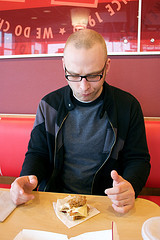Fed: Unemployment Wouldn't Be So High If People Weren't So Darn Uncertain About Economy
When I was a tiny little lad, my coach said the only thing keeping me from being a great soccer player was confidence… and my utter inability to kick the ball in anything resembling a straight line, but also my confidence. Now some number-crunchers at the Federal Reserve Bank of San Francisco say that the country’s unemployment rate would be a touch lower if we had all just been less uncertain about the economy.
“Our statistical model suggests that uncertainty has pushed the unemployment rate up at least one percentage point in the past three years,” write the researchers.
One possible reason for the uncertainty could be that nominal interest rates simply can’t go any lower, thus “[monetary] policy is less able to counteract uncertainty’s negative economic effects.”
“The private sector responds to rising uncertainty by cutting back spending,” explains the Fed, “leading to a rise in unemployment and reductions in both output and inflation.”
The Fed researchers constructed a model to calculate what would have happened if there had been no increase in uncertainty since 2008. The result of their study is that the “unemployment rate would have been closer to 6% or 7% than to the 8% to 9% actually registered.”
The study also found that higher uncertainty has more of a lasting impact on unemployment that it does on inflation. According to the Fed model, a higher level of uncertainty leads to an increase in unemployment that peaks in about 15 months but persists for around three years. Meanwhile, inflation hits bottom after about 12 months and begins inching back upward more rapidly than unemployment.
Last week, the Federal Reserve said it plans on keeping interest rates right above 0% through at least mid-2015.
Uncertainty, Unemployment, and Inflation [Federal Reserve Bank of San Francisco]
Want more consumer news? Visit our parent organization, Consumer Reports, for the latest on scams, recalls, and other consumer issues.


